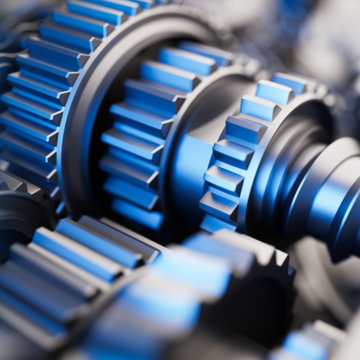
Industrial Internet of Things (IIoT)
What Opportunities Does the Industrial Internet of Things (IIoT) Present for Production?
IIoT in industry: Increased efficiency and new business opportunities
The Industrial Internet of Things (IIoT) is a subcategory of the Internet of Things (IoT) and relates specifically to the application of IoT technologies in industrial environments. Aspects of the IoT began to appear in the industry in the 1980s, but the term IoT didn’t emerge until 1999 when it was coined by technology researcher Kevin Ashton. The concept describes the increasing networking of machines, devices, sensors, workpieces, and people in the various manufacturing and processing industries and beyond.
Industry 4.0 and the Industrial Internet of Things (IIoT) are closely related, but not identical. Industry 4.0 represents the broader spread of digital transformation in the industry and encompasses a variety of concepts such as big data, robotics, cloud computing, and cyber-physical systems, whereas IIoT represents a specific technological subset and an important element of Industry 4.0 within this framework.
IIoT systems enable the collection, analysis, and exchange of vast amounts of operational data in real time, thereby achieving high levels of automation, efficiency, and productivity in industrial processes. By using IIoT technologies, companies can streamline their operations in terms of business intelligence, reduce costs, improve the quality of their products, and develop new business models. This produces a high degree of transparency and gives them control of their industrial processes.
One of the key features of IIoT is machine-to-machine (M2M) communication. It allows machines to operate autonomously while exchanging information with each other and making decisions based on that information. It also opens the door to concepts like predictive maintenance, which utilizes patterns in collected data to identify potential failures and schedule maintenance before problems arise.
Artificial Intelligence: An Important Tool in IIoT Data Management
The Industrial Internet of Things generally harnesses technologies like artificial intelligence (AI) and machine learning to identify complex patterns in data and make predictions and decisions. Data acquired through the IIoT can also be used for digital twins, which are digital models that use real-time data, simulations, and machine learning to understand, predict, and optimize the behavior of their physical, real-world counterparts. But the IIoT isn’t only about more efficiency. It’s about enabling new business models. Data generated by the IIoT can be used to offer new services to users, such as consumption-based invoicing models, improved customer services, and product-related services.
Despite its many benefits, the IIoT’s implementation entails challenges, especially around security and data protection. Data processed in IIoT systems is becoming increasingly sensitive and networked, which means robust security management is essential. Companies need to focus on proactive threat protection to minimize vulnerabilities in their IIoT and to ensure they automatically secure all of their IIoT devices and assets in the form of an OT backup. This requires solutions developed especially for the requirements of the IIoT and based on a multi-stage security approach.
Industry 4.0 and the IIoT are important drivers behind the digital transformation of the industry and offer significant opportunities for businesses of all sizes and sectors. But they’re also complex and require careful planning and implementation. Technology and business decision-makers, therefore, need to look carefully at the opportunities and challenges that the IIoT brings in order to protect all of their equipment as part of IoT device management and lead their businesses successfully into the digital future.

